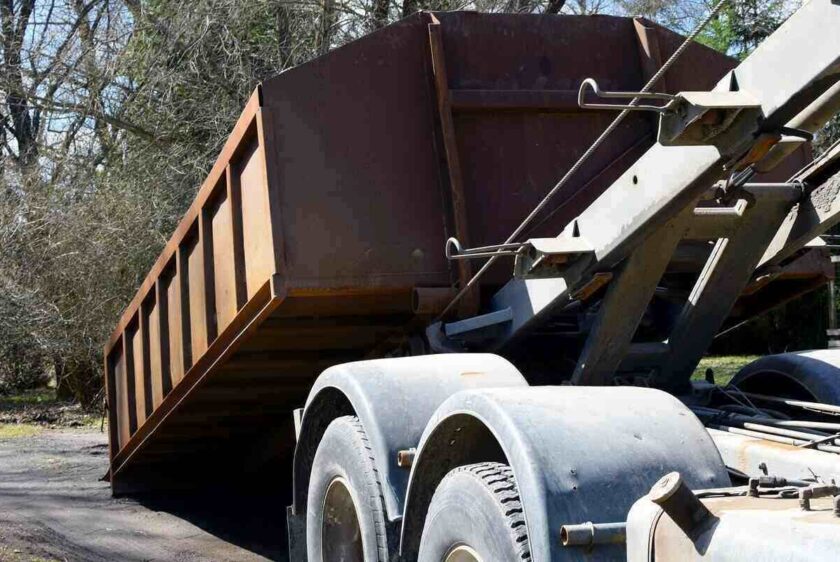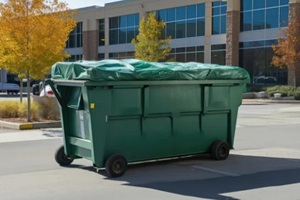
How to Choose the Right Dumpster Size for Your Project
When tackling a project that generates substantial waste, smart planning for debris removal is the logical first step. A dumpster rental provides an easy and effective way to handle project-related debris, but choosing the right size can be challenging. No matter the size of your home project or work site, selecting the appropriate dumpster size ensures smooth waste disposal and cost-effectiveness.
To help you make the right choice for your needs, we’ve compiled the top factors to consider when determining the perfect dumpster size. Let’s look at the essential questions you should ask to ensure your waste management strategy aligns perfectly with your project requirements.
Determine the Scope of the Project

First, calculate the general scope of your project. Are you working on a single room in a home, or are you tearing down an entire building? Depending on your answer, this can make a large difference. In general, projects can be grouped by size:
- Small projects – Spring cleaning, renovating a single room, attic cleanout
- Medium projects – In-depth or multi-room renovations, basement and garage clean-outs, roof replacements
- Large projects – Whole-home renovations or additions, complete exterior overhauls, cleanups for estate sales
Figure Out the Type and Volume of Debris
After determining your project’s scope, it’s crucial to consider the nature and quantity of your waste. The size and shape of your debris can significantly impact the dumpster size you’ll need, even for smaller projects. For example:
- Construction Projects: While general remodeling might require a medium-sized dumpster, tasks involving demolition or large-scale renovations might necessitate a larger container to accommodate bulky materials like drywall or flooring.
- Roofing Jobs: Roof replacements generate a significant amount of waste. Old shingles and underlayment can quickly fill up a dumpster, so it’s important to estimate the volume accurately.
- Decluttering Jobs: If you’re mainly disposing of smaller items like boxes or household goods, you might manage with a more compact dumpster, even for larger cleanouts.
Remember, it’s not just about volume; the nature of your waste matters too. Bulky items require more space, while dense materials like concrete or metal might quickly exceed weight limits in smaller dumpsters. Assessing your debris type ensures you choose a dumpster that’s both size and weight-appropriate for your specific project needs.
Identify the Ideal Dumpster Placement
Selecting an appropriate location for your dumpster is necessary for both convenience and safety. Consider these factors when deciding on placement:
- Space Constraints: Measure your intended dumpster area to ensure it can accommodate the size you need. Remember to account for height clearance, especially if there are overhead obstacles.
- Accessibility: Choose a spot that’s easily reachable for both you and the delivery vehicle. The location should allow for effortless loading of debris throughout your project.
- Surface Protection: Consider the impact on your property. Will placing the dumpster damage your driveway, lawn, or other surfaces? Ask about protective measures like driveway boards.
- Proximity to Work Area: While it might be tempting to place the dumpster in the largest available space, prioritize convenience. A dumpster closer to your project area will save time and effort during debris disposal.
- Permit Requirements: Check local regulations to see if you need a permit for dumpster placement, especially if you’re considering street placement.
- Clearance for Delivery and Pickup: Ensure there’s enough room for the truck to maneuver when delivering and retrieving the dumpster.
By carefully considering these factors, you’ll find the optimal spot for your dumpster, balancing convenience, safety, and property protection throughout your project.
Choosing From Common Dumpster Sizes
There are three basic dumpster sizes to choose from:

- 10 yard dumpsters – 12 feet long, 8 feet wide, 4 feet high. That equals around 10 cubic yards of space, or about three pickup trucks’ worth of storage. Because of its size, a 10 yard dumpster is typically the most affordable, and it’s also the easiest to fit and move.
- 20 yard dumpsters – 22 feet long, 8 feet wide, and 4.5 feet high. While the sideways footprint of this dumpster is similar to its smaller counterpart, you’ll need a lot more length space in order to fit it on your project site. However, at 20 cubic yards of storage, it holds twice as much as a small dumpster. Because it is much longer but not much taller, you will still need to think about how much space very large items take up within it.
- 30 yard dumpsters – 22 feet long, 8 feet wide, and 6 feet high. The few extra feet in vertical space make a big difference, adding another 10 cubic yards and making this option equivalent to around nine pickup trucks. While this largest size may be more expensive than smaller options, it is typically more affordable to fill one 30 yard dumpster than multiple smaller ones.
Schedule Your Dumpster Rental in Hampton Roads
Every project is unique, and there is no one-size-fits-all answer to which dumpster size you’ll need. Full Strut Disposal makes this process easier by keeping our prices competitive so you can access the dumpster that best fits your project goals.
We also deliver and pick up the dumpster, and those services are included in the rental fee!
Whether you need help understanding which dumpster size is right for you or you have questions about how to use your new dumpster, contact Full Strut Disposal. We’ll help you dispose of your project debris.



